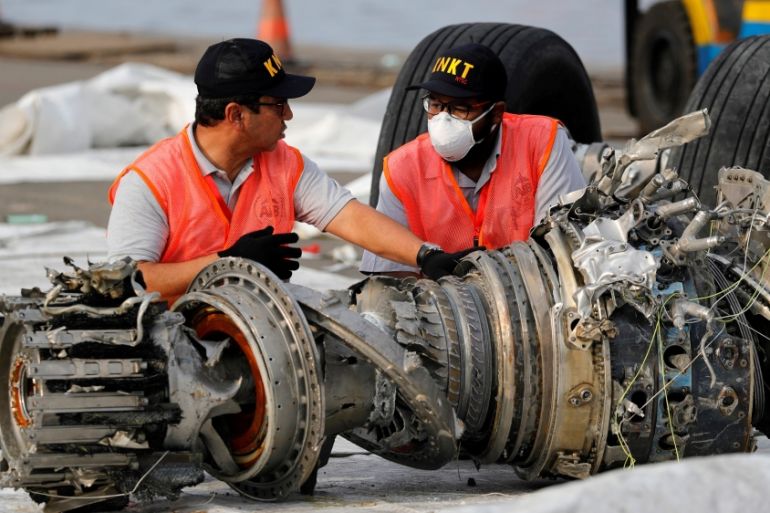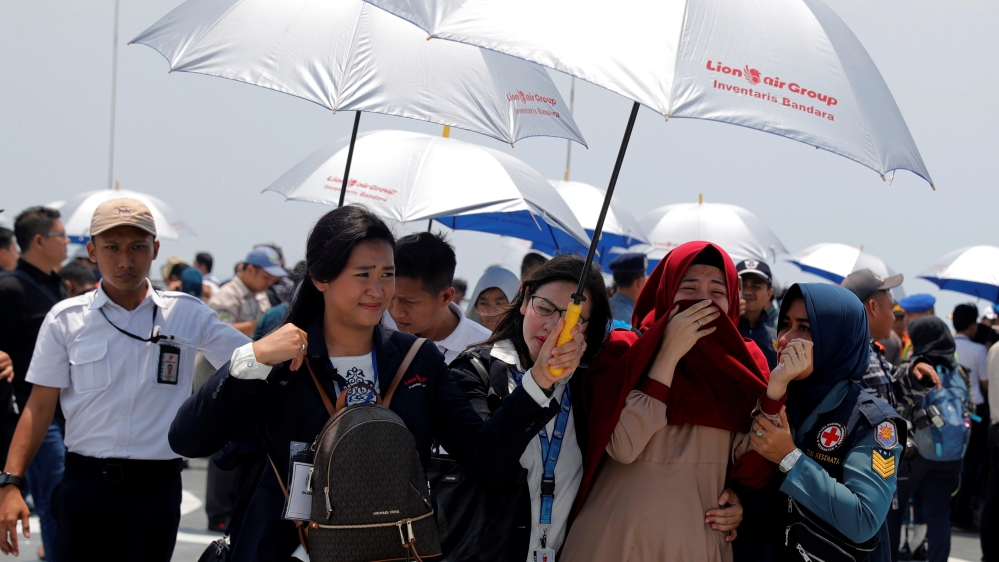Lion Air: Boeing 737 MAX design flaws tied to Indonesia crash
Incorrect assumptions on how an anti-stall device functioned and how pilots would react cited as factors of the crash.

Mechanical and design issues contributed to the crash of a Lion Air Boeing 737 MAX jet in October 2018, investigators from Indonesia told victims’ families in a briefing on Wednesday in the face of the release of a final report.
Contributing factors to the crash of the new Boeing jet, which killed all 189 on board, included incorrect assumptions on how an anti-stall device called the Maneuvering Characteristics Augmentation System (MCAS) functioned and how pilots would react, slides in the presentation showed.
Keep reading
list of 4 itemsAustralian women lose bid to sue Qatar Airways over 2020 strip searches
US officials probe new whistleblower claims against Boeing
Engine cover falls off Boeing plane during takeoff in US city of Denver
The briefing slides also showed a lack of documentation about how systems would behave in the crash scenario, including the activation of a “stick shaker” device that warned pilots of a dangerous loss of lift, also contributed.
“Deficiencies” in the flight crew’s communication and manual control of the aircraft were other factors, the slides showed, as did alerts and distractions in the cockpit.
|
|
The deficiencies had been “identified during training”, the slides said, without going into detail.
Reliance on a single angle-of-attack sensor made the MCAS more vulnerable to failure, while the sensor on the plane that crashed had been miscalibrated during an earlier repair, according to the slides.
The final report will be released on Friday.
A Boeing spokeswoman declined to comment on the briefing, saying, “As the report hasn’t been officially released by the authorities, it is premature for us to comment on its contents.”
A Lion Air representative declined to comment.
The Boeing 737 MAX was grounded worldwide after a second crash in Ethiopia in March 2019.
US plane-maker Boeing is under growing pressure to explain what it knew about the 737 MAX problems before the aircraft entered service, especially after a Reuters news agency report on messages from a former test pilot describing erratic software behaviour on the 737 MAX jet two years before recent crashes.

Boeing has already said it will redesign the anti-stall system to rely on more than a single sensor and to help reduce pilot workload.
Deadly flight
Air traffic control lost contact with the Boeing 737 MAX jet 13 minutes after it took off on October 29 from the capital, Jakarta, heading north to the tin-mining town of Pangkal Pinang.
The plane had suffered a series of problems in cockpit readings since October 26, culminating in a decision to change the angle-of-attack sensor before its penultimate flight from Denpasar to Jakarta.
During the fatal flight, a “stick shaker” was vibrating the captain’s controls, warning of a stall throughout most of the 13 minutes aloft, based on what investigators believe to have been erroneous data on its angle to the oncoming air.
|
|
That angle is a key flight parameter that must remain narrow enough to preserve lift and avoid an aerodynamic stall.
The aeroplane’s anti-stall system repeatedly pushed the nose down, which is how pilots usually get air under the wings.
Boeing was widely criticised for placing emphasis on piloting and maintenance issues in its public response to an earlier report, sparking a furious dispute with Lion Air’s cofounder, Rusdi Kirana.
But it has since acknowledged that MCAS and a faulty sensor played a role, and apologised for lives lost without admitting formal responsibility.
The plane-maker last month settled the first claims stemming from the Lion Air crash, a US plaintiff’s lawyer said.
Three other sources said the families of those killed will receive at least $1.2m each.
The manufacturer faces nearly 100 lawsuits over the Ethiopian Airlines crash on March 10, which killed all 157 people on board the flight from Addis Ababa to Nairobi.